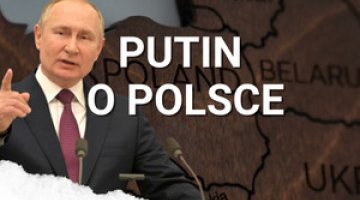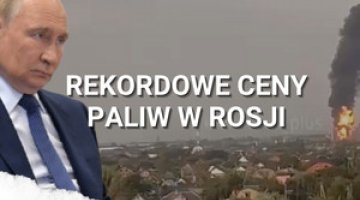Russia tightens up residence regulations for CIS citizens
As of 1 January this year, Russia has tightened the rules on residence on its territory for foreigners from countries whose citizens have the right to visa-free entry to Russia. These restrictions cover immigrants who come to Russia without a work permit. In fact, the purpose of this change is to create an instrument of legal limitations and regulation of labour migration from CIS countries. This is a reaction by the Russian authorities to socio-political problems arising from the uncontrolled influx of immigrants and the increase in anti-immigrant sentiment in Russian society.
For Russia, which ranks second in the world in terms of the number of immigrants, and is the main destination of migration for citizens of the post-Soviet states, the large-scale presence of immigrants is an important factor shaping the socio-economic situation in the country: on the one hand, it caters to the growing demand for labour in the Russian economy in recent years and mitigates the effects of demographic decline; on the other hand, however, it generates social tensions.
The objective of the changes to the regulations, as declared by the government, is to reduce the number of illegal immigrants in Russia and increase state control over migration. However, due to the widespread disrespect for the law and the bureaucratic corruption prevalent in Russia, the change in regulations should not be expected to have the desired effects. Another obstacle is the lack of a coherent migration policy and any consistency in its implementation, as well as its use as an instrument of domestic and foreign policy, particularly in relation to the CIS countries. The new legislation may therefore be used by the Kremlin selectively in relation to specific diasporas, and could provide a new excuse to reap the benefits of corruption.
The legal situation
According to the amendments, foreigners with the right to visa-free entry to Russia may reside on its territory for a maximum of 90 days within a half-year period. At present, they may remain on Russian territory for 90 days without any further time restrictions, i.e. after the 90 days expire, they may leave and return the next day without losing the right to legal residence. In practice, this mechanism allowed them to extend their temporary residence to a de facto permanent residence. The new changes will mainly affect immigrants who do not have work permits, primarily CIS citizens who come to Russia without visas to find work.
Representatives of the Federal Migration Service estimate that 11.3 million foreigners currently reside in Russia, of whom about 3.5 million do so illegally. These are people who entered Russia in accordance with the law, but have overstayed the period of authorised residence. In some experts’ opinion, the real number of foreigners and people working illegally in Russia could be much higher. The increase in the number of foreign workers may be demonstrated by the systematic rise in money transfers from Russia to the countries of origin of the largest diaspora communities. In 2010, transfers from individuals in Russia to CIS countries amounted to US$11.1 billion; in 2011 the figure was US$15.14 billion, and in 2012 US$18.2 billion. In 2012, the majority of remittances went to Uzbekistan (31.1%), Tajikistan (20%), Ukraine (14.7%) and Kyrgyzstan (10%). The citizens of these countries are the most numerous diasporas in Russia: according to estimates, 2.5 million citizens of Uzbekistan, 1.5 million of Ukraine, 1.1 million of Tajikistan, and 500,000 each of Kyrgyzstan and Moldova are currently resident in Russia.
Carrot and stick
The changes in migration law represent the Kremlin's reaction to the anti-immigrant sentiments which are gathering force in Russian society, and are the realisation of the government’s promises to tighten the regulations against immigrants which it made after a series of ethnic-based conflicts (the reaction to one of which was the riots in the district of Birulevo in Moscow last summer). Sociological studies indicate that most Russians perceive the presence of guest workers and internal migrants from the Russian republics of the North Caucasus as a negative phenomenon which generates ethnic and religious tension, and also contributes to the rise in the levels of crime and competition on the labour market. Up to 70% of Russians favour limiting the influx of immigrants, and have called for a stricter policy in this area. In addition, 84% of Russians support the introduction of a visa regime with the CIS countries. The Kremlin, however, has firmly refused to introduce visas for these countries, as such a move would be contrary to its Eurasian integration project, which envisages strengthening social and economic ties between Russia and its neighbours.
The newly-introduced changes to the law should be regarded as merely a half-measure, partly designed to meet social expectations, and which also demonstrate that the government is fighting illegal immigration and tightening up its migration policy. On the other hand, the Kremlin may use these changes in its migration policy as applied to the CIS countries, the aim of which is to encourage them to integrate with the Customs Union, wherein the free flow of human capital is in force. It is important to note that, for some countries of the CIS, remittances from migrants working in Russia are the driving force of their economies. The size of these remittances represents a substantial part of national GDPs; for example, 47% in Tajikistan, 29% in Kyrgyzstan, and 23% in Moldova (data from 2013). Russia’s instrumental use of its migration policy is also demonstrated by the fact that this new legislation is unlikely to affect migrants from Tajikistan, as labour migration from there is already regulated under a bilateral agreement with Russia, the signing of which was related to the achievement of other Russian strategic and economic objectives.
Theory and practice
As the Kremlin sees it, tightening up the residence of foreigners in Russia should lead to a reduction in the number of illegal immigrants. The government has emphasised that the reforms are in line with migration legislation in force in Western countries. Russia ranks second in the world (after the US) in terms of the number of immigrants, and the problems which have arisen from the scale of the influx of foreigners into the country are one of the most important reasons for the rising tensions in social relations. This also has political consequences; many Russians blame the authorities for allowing the uncontrolled influx of immigrants, which in their opinion has led to a deterioration in the position of the local residents (for example, by increasing competition on the labour market and undercutting wages).
However, trying to solve the problems resulting from the influx of immigrants by tightening the regulations may end up having the opposite consequences to those intended. This is because the changes are not appropriate to the actual needs of the labour market, corruption remains prevalent in the state apparatus, and employers are only interested in recruiting employees who are cheap and enjoy no legal rights.
It is therefore likely that the new rules will result in an even greater number of guest workers losing their right to legal residence, and thus being pushed into the informal economy. Although it would be in the interest of the majority of migrants to legalise their residence and take legal employment in Russia, opportunities to do so are steadily decreasing. Nor should we expect the new rules to have any real effect on limiting immigration to Russia, because the level of earnings remains high relative to the rest of the countries in the region, and the labour market is receptive. Demographic projections indicate that due to the ageing of the population, 1 million employees will disappear from the Russian labour market every year over the next five years, which will increase the demand for guest workers’ labour. Also, the tightening migration rules are not being accompanied by an increase in the number of work permits for foreigners. In 2013, Russia issued 1.7 million such licenses, but a quota of 1.6 million permits has been set for 2014. The number of permits has thus decreased, despite the growing demand for workers on the domestic labour market, which is demonstrated by the low unemployment rate. In 2012 it reached 5.4% for Russia as a whole, while in Moscow and St. Petersburg, which have the largest concentrations of immigrants, the figures were 0.9% and 1% respectively.
The new restrictions will not ease ethnic tensions in Russia either. The nationalist and anti-immigrant sentiments are the result of the rapid and visible increase in the number of culturally distinct immigrants in large urban centres in Russia. However, it is the presence of migrants from the North Caucasus – which is part of Russia – which is most likely to spark conflicts, and not that of immigrants from the CIS, whom the new laws cover. In connection with this, the Kremlin plans to restrict the internal mobility of citizens in the future, including tightening up the rules for registration of residence within Russia. However, these proposals have raised objections from people originating from Russia’s regions, as well as from opposition circles who perceive this as an attempt to ‘tie people to the land’ and restrict their rights (guaranteed by the Constitution) to free movement and to take up employment in any part of the country.





